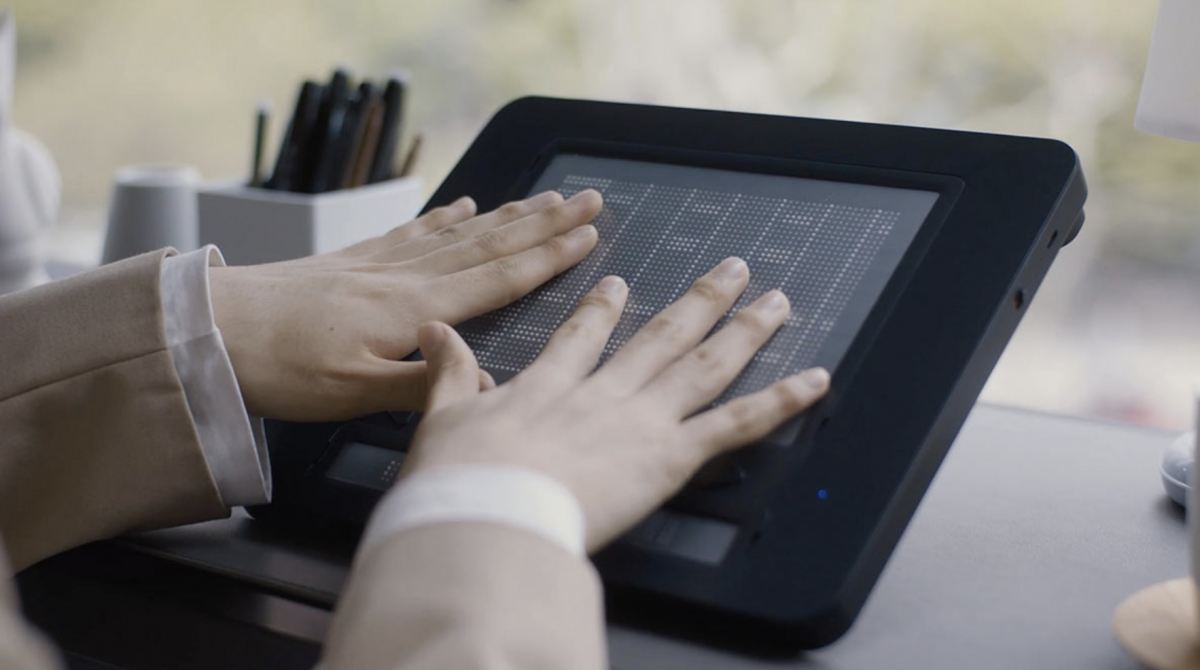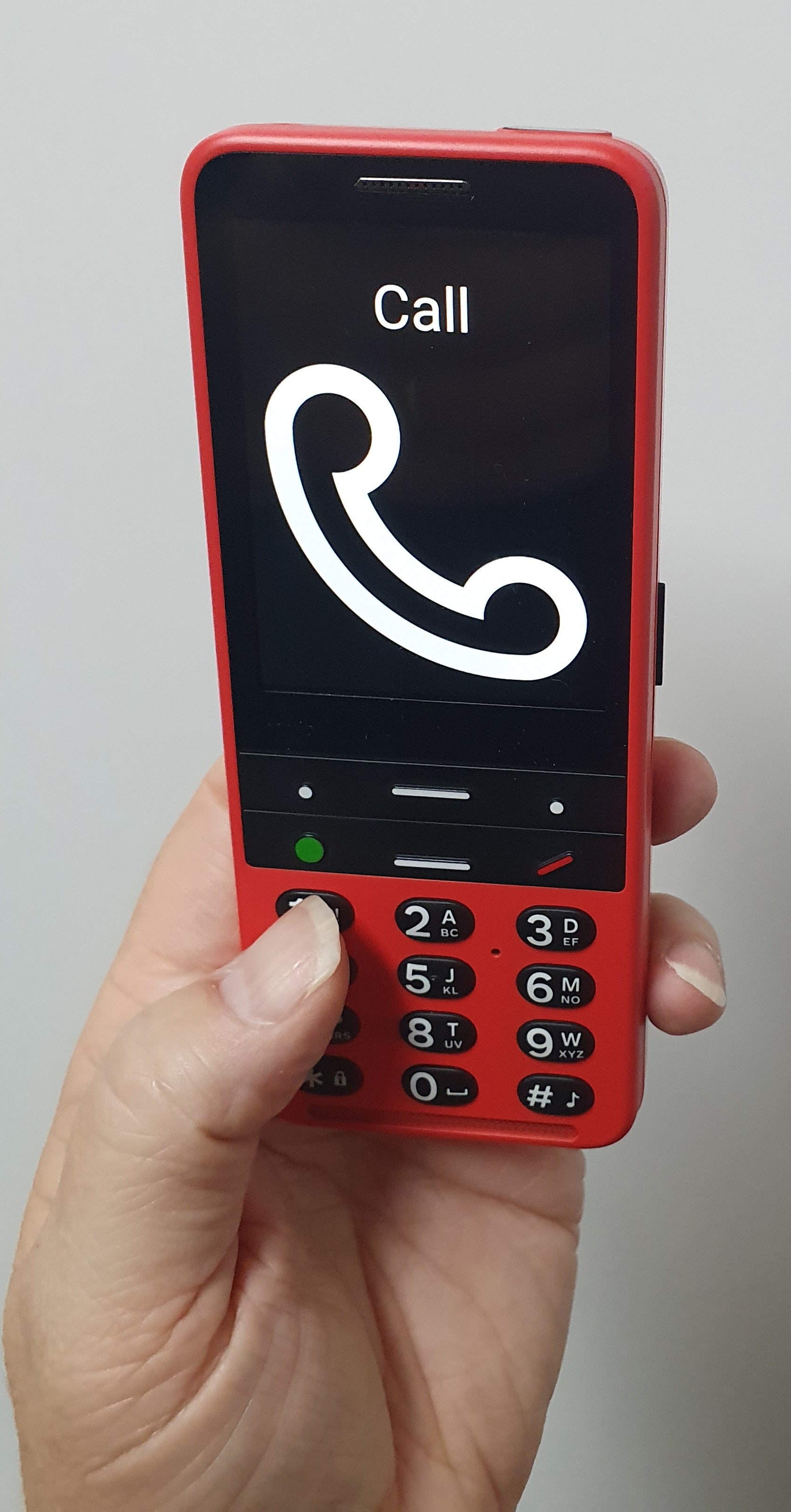Mobility Aids for Visually Impaired Users: Improving Independence
Wiki Article
Discover Cutting-edge Tools Designed for the Aesthetically Damaged
The development of innovative devices for the aesthetically impaired stands for a substantial improvement in ease of access and self-reliance. Technologies such as smart glasses with AI capacities and mobile applications developed to provide auditory summaries are reshaping everyday experiences for customers.Smart Glasses for Navigation

Smart glasses created for navigating are changing the means visually impaired people communicate with their environment. These advanced tools use a mix of cam modern technology, artificial intelligence, and acoustic responses to supply real-time details regarding environments. By utilizing obstacle discovery systems, smart glasses can signal customers to possible hazards, allowing much safer wheelchair in both unfamiliar and acquainted settings.
The assimilation of GPS innovation additionally boosts navigation capabilities, enabling users to get acoustic directions as they relocate. This hands-free technique not just fosters independence but likewise empowers aesthetically impaired individuals to navigate metropolitan landscapes with increased self-confidence. Additionally, numerous wise glasses are equipped with attributes that determine landmarks and road signs, offering contextual details that improves the individual experience.
Furthermore, the growth of these tools is consistently progressing, with business functioning to boost the precision of object acknowledgment and increase the variety of navigational functions. As clever glasses come to be extra obtainable and inexpensive, they hold the prospective to considerably change every day life for visually damaged individuals. Inevitably, these innovative devices represent a critical step toward inclusivity, offering improved flexibility and a higher feeling of autonomy for people navigating the world around them.

Mobile Application for Daily Living
Just how can mobile applications improve the everyday lives of visually impaired people? Mobile apps are transforming the means aesthetically damaged users browse their environments, handle day-to-day tasks, and accessibility information. These applications offer necessary support through different functionalities, fostering self-reliance and improving high quality of life.A number of ingenious mobile apps are designed especially for day-to-day living. For example, apps like Be My Eyes connect visually damaged individuals with sighted volunteers via video phone calls, enabling them to get real-time aid with tasks such as reading labels or navigating unknown areas. Seeing AI, developed by Microsoft, utilizes artificial intelligence to define environments, read message, and recognize objects, successfully changing a smartphone into an effective device for day-to-day support.
In addition, navigating apps tailored for the visually damaged, such as Aira and BlindSquare, supply audio-based directions and environmental info, making it possible for users to traverse their environments safely and confidently. Past navigating and instant support, mobile applications additionally sustain company and job management, with features that assist individuals establish tips, develop to-do lists, and track appointments. In summary, mobile applications function as crucial sources, encouraging visually damaged people to lead even more independent and fulfilling lives.
Wearable Technologies for Assistance
Empowerment through technology is increasingly apparent in the realm of wearable gadgets developed to help aesthetically damaged people. These cutting-edge tools integrate perfectly into every day life, improving navigating and giving essential comments to individuals. Smart glasses outfitted with cams can read and identify faces message aloud, allowing individuals to communicate more with confidence in expert and social settings.One more remarkable development is making use of haptic responses systems in wearable gadgets. These systems utilize resonances or other responsive signals to communicate information regarding the user's setting, such as obstacles or adjustments in terrain, boosting movement and safety. Wearable innovations also consist of wristbands that connect to mobile phones, alerting individuals to notifications with refined vibrations, hence enhancing connection without dependence on visual signs.
As these innovations remain to develop, they are not just improving freedom for aesthetically impaired people however also cultivating a better feeling of addition in society. By linking the space in between challenges dealt with in daily living and the possibility for freedom, wearable modern technologies act as crucial devices in the pursuit for equal rights and empowerment for those with aesthetic problems.
Sound Description Tools
Audio description tools play an essential function in boosting ease of access for visually damaged people, providing them with the ability to engage with visual media. OCR devices for the blind. These devices offer narrated descriptions of key visual aspects in films, television shows, and live performances, making sure that individuals can completely understand the context and feelings communicated through visualsAudio description can be integrated into various platforms, including streaming solutions, movie theater testings, and live cinema. Several preferred streaming solutions currently consist of audio summary as an accessibility feature, allowing audiences to choose it quickly. Along with conventional media, specialized apps likewise exist, offering audio descriptions for art exhibits, museums, and other cultural events.
The effectiveness of audio description rests on the skill of the narrators, that need to communicate visual information succinctly without interfering with the original audio. Innovations in this area are likewise paving the means for even more individualized experiences, where individuals can adjust the degree of detail and pacing according to their preferences.
Braille Innovations and Tools
Braille technologies and devices have dramatically changed the means visually damaged people interact with text and information. Modern developments have resulted in the advancement of functional devices that enhance proficiency and freedom among individuals. Significantly, Braille show innovations have progressed, permitting dynamic reading experiences. These gadgets transform electronic text right into Braille, enabling individuals to access a vast selection of information on computer systems, mobile phones, and tablet computers.
Moreover, mobile Braille notetakers incorporate conventional Braille input with modern-day performances, assisting in note-taking, organizing, and paper editing on the go. OCR devices for the blind. These compact devices usually include text-to-speech capacities, bridging the space in between Braille and acoustic info
On top of that, innovative Braille printers have actually arised, permitting individuals to create Braille tags, documents, and academic materials effectively. This availability cultivates better participation in expert and instructional settings, ultimately advertising inclusivity.
In addition, research into wise Braille technologies continues to increase. Gadgets that integrate expert system are being checked out to supply real-time navigating assistance and contextual details, enhancing the customer experience in varied setups. In general, these advancements mirror a commitment to encouraging visually damaged individuals with modern technology, ensuring they can quickly gain access to and engage with the world around them.

Conclusion
The improvement of cutting-edge tools for the visually damaged substantially improves independence and quality of life. These modern technologies not only foster higher incorporation yet likewise promote freedom in day-to-day activities, ultimately adding to an extra equitable and accessible society for visually impaired individuals.As clever glasses end up being extra obtainable and budget friendly, they hold the prospective to considerably change day-to-day life for aesthetically damaged individuals. Mobile apps are changing the means visually impaired individuals browse their atmospheres, handle everyday tasks, and gain access to details. Apps like Be My Eyes attach visually damaged users with sighted volunteers by means of video telephone calls, permitting them to get real-time support with jobs such as checking out labels or browsing strange rooms.Furthermore, navigation apps customized for the visually impaired, such as OCR devices for the blind Aira and BlindSquare, use audio-based directions and environmental information, allowing individuals to traverse their environments securely and with confidence.The innovation of ingenious tools for the visually impaired dramatically improves self-reliance and top quality of life.
Report this wiki page